Learning how to develop a story so that you take readers on an unforgettable journey is key to becoming a great novelist. Here are 10 steps to ensure that your book has a winning, memorable plot:
Develop your story in 10 simple steps:
- Study effective examples of plot development
- Use a plotting process to shape your story
- Create a timeline of your novel's plot events
- Make characters develop in intriguing ways
- Make each of the '5 W's' change
- Outline scenes to create a storyboard
- Learn how to develop a story using subplots
- Use character-driven and action-driven arcs
- Ask yourself key questions about story development
- Get helpful feedback on your story arc
Study effective examples of plot development
Reading is a great way to improve at any stage of the writing process because great writers give us inspiring examples of how to get craft right.
When you read your next novel, ask:
- How do the characters in the novel change over time?
- What is the main sequence of events (what happens in the novel and when?)
- Where does the story take place? What benefit does each setting offer to the overall story structure and development?
A few experts of story development you could read:
- John le Carré, noted for his spy novel plots
- J.R.R. Tolkien (whose Lord of the Rings has been voted the best single plot arc in a multi-novel series)
- Sir Terry Pratchett
- Stephen King, whose horror and supernatural thriller books are frequently adapted for film due (in part) to their tight plots
You can read the work of contemporary bestselling authors for insights (particularly regarding what is marketable).
Yet many classic authors (e.g. Charles Dickens) are read to this day for their brilliantly paced, well-structured stories.
Use a plotting process to shape your story
Great plots begin with curiosity and good ideas.
It helps if your story begins with an intriguing hypothetical situation (for example, the premise of Orwell's Nineteen Eighty-four: A tyrannical political regime has criminalized independent thought as 'thoughtcrime'). A good story idea should be fleshed out through a focused plotting process that will shape your story, however.
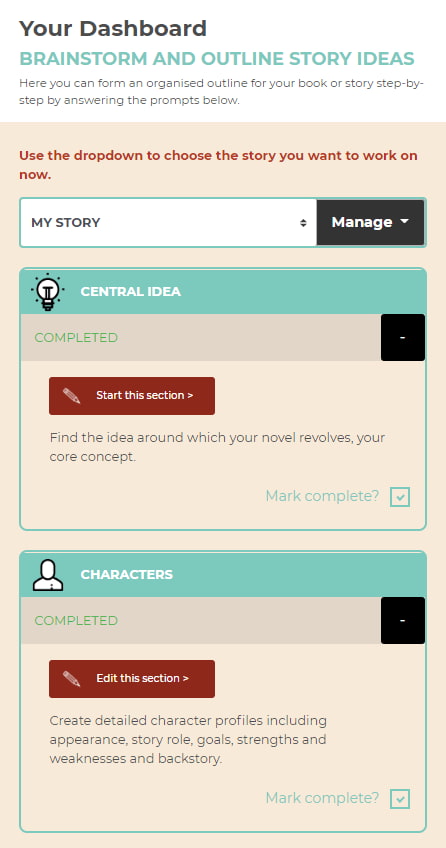
Developing a detailed summary is a useful exercise for letting your ideas for characters and plot points grow and settle. You might depart from your outline substantially while you draft. Even so, it will help you start thinking about your book as a connected whole.
Create a timeline of your novel's plot events
Developing a story is easier when you understand the 'when' of your story.
As an exercise, create a timeline of your novel's plot events.
Make each branch in your timeline a chapter, with a summary of the most basic plot details. For example, 'Main character learns identity of parents, prepares to try find them.')
If you don't intend to plot your entire novel in advance, create a timeline all the same. Fill it out in summary form as you draft so that you have a condensed visual reference. It'll make it easier to recall where your story has lead you so far, and what the overarching flow of events looks like.
Having a document such as this helps you to navigate between the detail-oriented process of drafting scenes and chapters, and the necessary macro process of seeing the greater picture.
Make characters develop in intriguing ways
Once you've done all of the above, it's time to start thinking about how your character(s) will develop.
At the start of writing a novel, identify each primary character's main goals.
Start brainstorming how these coupled with personality traits could lead them to develop.
A shy college student who wants to become a leading scholar, for example, might encounter a lecturer with whom he establishes an uncommon, lasting friendship. Obstacles to the character reaching his goals could include scholarship woes or false accusations of plagiarism.
Whatever your story idea, make your characters develop in interesting ways. Show how their wants (or fears) affect their choices. Show the consequences that lead from there.
Make each of the '5 W's' change
In novel-writing and journalism alike, a 'story' is made up of the '5 w's' - 'who', 'what', 'why', 'where' and 'when'. Who are the important characters in your story? What is the situation they find themselves in and why? Where and when does the story take place?

A great story doesn't just contain satisfying answers for these five questions. It also shows some development in each of these areas.
Your main character could be a trainee policewoman living in a rural community, for example. She's considering giving up her career path because she finds small town life stifling. Suddenly, a local triple homicide ropes her into the most daunting (as well as thrilling) elements of police work.
The 'who' can change: Perhaps the trainee toughens up and becomes highly competent in her job as a result.
The 'what' (her goal) can shift: She realizes her calling is serving her community, and this could be because of new, meaningful interactions and relationships she forms in the course of doing her police work.
She might eventually leave for the big city, too (a change in 'where'), wiser and more experienced.
If you make each of these elements of plot change convincingly, you'll take the reader on a journey and will have developed your story.
One way to make sure this development happens is to storyboard your book:
Outline scenes to create a storyboard
Whether you use index cards, software or a cloud-based story planner for writers, a storyboard is a useful device for developing your story.
Try to summarize the key events of each scene in as little as two lines, which of your characters it will involve, and what the scene's purpose is.
You can do all this in the Scene Builder tool in the Now Novel dashboard, and import it to view alongside your working document using our free Google Docs plugin.
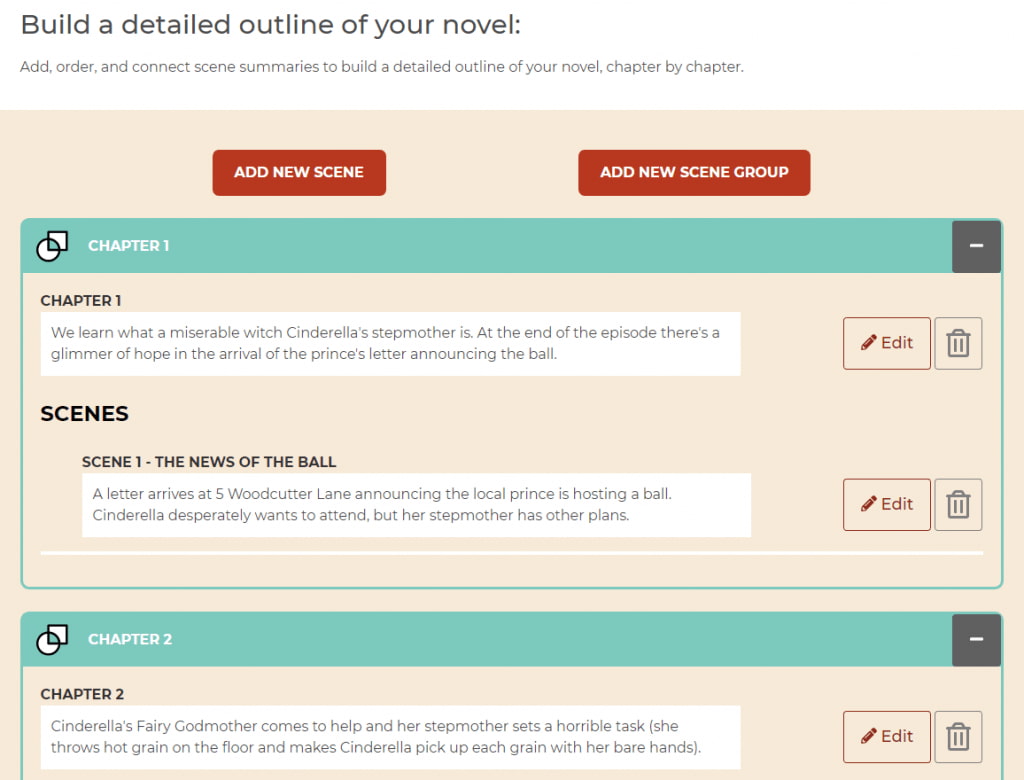
As you plot your novel and plan your story development, you can reorder scenes as your story dictates, until you have a sequence of scenes that makes sense to you.
Sometimes you'll find the order of two or more scenes should be reversed. Other times you might find that an early scene might be better shifted towards the end of the story due to its content or mood. This process will help you make your story flow and develop smoothly.
Learn how to develop a story using subplots
A subplot is a secondary or subordinate plot that supports your main story arc.
To use a well-known example, in Harper Lee's famous novel To Kill a Mockingbird, the children's fascination with their mysterious, reclusive neighbour Arthur 'Boo' Radley (and their eventual encounter with him) is a subplot to the main story (a trial exposing race politics in which the children's father Atticus is involved).
In Lee's book, plot points involving Boo Radley support the main arc. The children receive a practical lesson through their encounters with Boo. They learn that inventing fantastical stories about others and turning them into bogeymen is a dubious alternative to confronting fear of the unknown and getting 'the whole story' about a person. In this way, Lee uses her subplot to underscore the issues at heart of the story's central legal trial.
Use character-driven and action-driven arcs
'Change' is what propels a story forward. In character-driven stories, choices, actions and reactions lead to change. Characters' goals, motivations, conflicts, dilemmas and decisions.
In a thriller novel, for example, character-driven scenes show reader the stakes (the main character's loving relationship with their child, for example). This makes action-driven sequences such as high-speed chases all the more nail-biting and intense since we are aware of all the personal, cherished things driving the main character's will to survive.
To develop your story satisfyingly, make sure you balance character-driven scenes with action driven ones.
Even if you are writing something less dramatic and violent such as a regency romance, the same applies. Show scenes where your main characters undertake mainly action-based activities - a carriage or train ride, for example. Use these as points of transition between scenes that deepen and grow your characters.
As you write and near the end of your first draft, it's useful to ask questions about story development so you can decide whether or not your story shows enough growth and change:
Ask yourself key questions about story development
Once you've written the bulk of your novel, ask yourself these questions about your story's development:
- How have the main characters changed in the course of the story?
- Why have they changed?
- What have the characters (and readers) learned about the story's central situation or premise that they didn't know at the start?
- What are the core themes of the story? (For example: 'Triumph over adversity', or 'the danger of obsession')
Once you have answers to the above, keep them in mind while revising. Is there any point in the story where a small tweak could make these elements more apparent?
Perhaps your main character's growth isn't as clear as you would like. Or else there hasn't been enough change or development to illustrate your central theme. Keeping track of your plot - not just what happens but the reasons for plot events as well as their consequences - will help you create a more satisfying story.






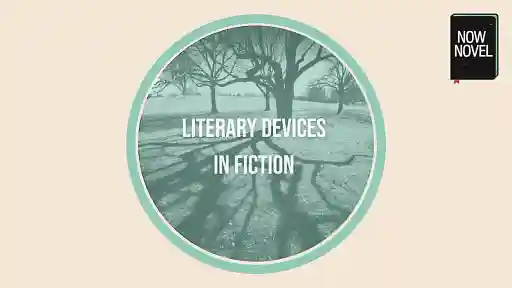
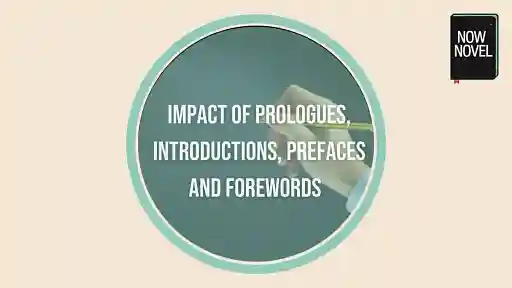
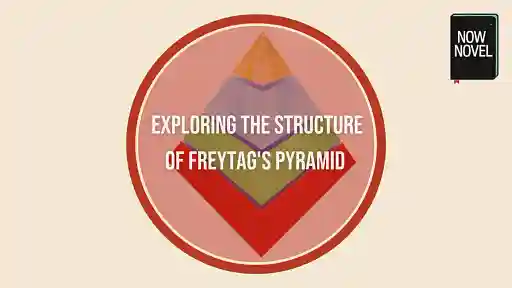


How do I create an organic subplot that is not in the story just for the sake of being in the story?
Marissa - About 7 years ago
Hi Marissa, thanks for the question. This blog post here should help: https://www.nownovel.com/blog/subplot-ideas-better-subplots/ I'd say make sure you link the subplot to the action in your main arcs (e.g. what actions by your main characters could cause your subplot to unfold?). Also think about how a subplot could show themes in your story from new angles. Good luck!
Bridget At Now Novel - About 7 years ago
this is very good service.
Saleel - Over 5 years ago
My prompt was to write what does it mean to be a family? But I don't know how to make it interesting. Can you please give me ideas or suggestions.
Chrissy - Over 5 years ago
Well maybe getting weird situations in front of the family or you can take different families and keeping the same theme use different situation with each .. i m a nub myself so don't judge me
Saharsh - Over 4 years ago
Chapters...as in actual Chapters? Or is that just parts?
Jaquses - Over 4 years ago
In this case it would be parts (if you're referring to the episode outline example in the article, Jaquses).
Jordan At Now Novel - Over 4 years ago
Under Step 5 the link doesn't seem to be working.
Ash - About 4 years ago
Thank you for letting us know, Ash! I've fixed it, thank you for reading our articles.
Jordan - About 4 years ago
Some of this is helpful. I remember the Doctor Who novels of the 1960s and 1970s that were written by the same writers who scripted for the show. The TARDIS lands and quickly the Doctor is separated from either one or all of his companions. Then there are adventures had by both Doctor and companions that lead to the final solution. I like that and that is how my own novels currently develop.
Rodney Marsden - Almost 4 years ago
Hi Rodney, thank you for your feedback! I'm glad some was helpful. Your description of Dr Who reminds me of that Bradbury quote that 'plot is nothing more than footprints left by your characters in the snow'. This 'scenario + surprising events within that scenario' type of loose structure does work well for adventure novels, as they tend to be more episodic (e.g. Homer's Odyssey). I would say if you've found an approach to story development that works for you (and for a reader), definitely run with it.
Jordan - Almost 4 years ago
Don't forget to familiarize yourself with Greek tragedy, the epitome of what a compelling story is. I suggest starting with Oedipus Rex. If there ever were a good story with loads of incredible tension baked in, that's the one.
Rsd Owens - Over 3 years ago
That's a great recommendation, RSD, thank you. I played Tiresias once (many years ago) in a high school production. Greek myth, too. Thank you for reading our blog.
Jordan - Over 3 years ago
I am an aspiring writer but have no idea where to even start in developing a storyline. Where is a good place that can teach world building and basic writer tips?
Liz - Over 3 years ago
Hi Liz, thank you for asking us. We have a free 5-day email mini-course on worldbuilding you may find helpful, you can subscribe to the lessons here. Alternatively, here is our category page for all our posts on worldbuilding. As for developing a storyline, starting with a core central idea or scenario is a good first step. Here are some tips for developing that further once you have a premise. Let me know if you have any questions!
Jordan - Over 3 years ago
This was so helpful! I have not thought to study effective examples of plot development yet I do take parts of stories I like and re-create them in a sense without thinking about what I've actually been doing. Your site is really well made and I will be using it again!
Shannon O'hara - Over 3 years ago
Thank you for sharing this feedback, Shannon. I'm glad you're enjoying Now Novel. Studying how works of art are put together (in any artistic medium) is helpful indeed, I would say. Understanding the techniques of others empowers one. I think of it as having more colors in one's palette.
Jordan - Over 3 years ago
I will keep the information I learned on character change and plot development in my memory. Speaking of Stephen King, he reads a lot and is a disciplined writer. I read he always reads while waiting in line, reads 70 books a year and writes 2000 words a day.
Todd Hicks - About 3 years ago
Helpful information! Thank you so much! Am on commission to write a novel and this is so helpful! Thank you! Kris Kemp
Kris Kemp - Over 2 years ago
Hi Kris, thank you for your kind feedback and for reading our blog. Good luck with your commission!
Jordan - Over 2 years ago
Hi Jordan Want to share something about sub plots. Sometimes while reading a novel, I've come across sub plots that are very intriguing. While carefully absorbing the central story, you keep waiting for the next event in the sub plot in one corner of your mind. Do you find it necessary to ultimately connect the sub plot to the theme or may it be left incomplete in the end? I know there can be a 'YES' or 'NO' to this, yet I want to know your preferences.
Rajesh Chandra Pandey - Over 2 years ago
Hi Rajesh, thank you for sharing your question. I would say it is most common for a subplot to illustrate or be connected to a story's core themes. For example, in Pride and Prejudice there are additional subplots involving relationships and the reasons people marry, so there are different angles presented on the idea of matrimony. Whether one is better or not, being a fan of grey areas I wouldn't say it's a simple 'yes or no' question, since it depends on the purpose of a subplot. Some subplots serve to develop secondary characters and their own story arcs, others develop or demonstrate key concepts that underscore the importance of primary narrative arcs coming to their logical conclusion. For example, in The Lord of the Rings a subplot where a member of the traveling adventurers' party tries to steal the One Ring is illustrative of the ring's corrupting power, or power's relation to corruptibility generally (and drives home the point that the ring must be destroyed). I hope this helps! Thanks for reading our blog.
Jordan - Over 2 years ago
thanks for the inspiration. I will keep at it and one day God-willing, I will be good too:)
Paul Grimmond - Almost 2 years ago
Hi Paul, that's the spirit - perseverance is everything. Thanks for taking the time to share your feedback.
Jordan - Almost 2 years ago
Soo inspiring, I personally love story writting, however how do I actually come up with helpful feedbacks in my story. And moreso how to phase my topic of the story
Geofrey Towong - Almost 2 years ago
Hi Geofrey, I'm happy to hear you found this inspiring and that you're passionate about storytelling. You can get feedback on your writing (if that's what you're asking? I think you meant on rather than 'in your story) from our constructive community of writers (it's free to create a member account and swap crits in our critique community). I'm not sure what you mean by 'phase my topic', do you mean 'phrase' or summarize your story idea? Here's a blog post on developing story ideas you may find useful: How to start writing a book: Developing rough ideas. Good luck!
Jordan - Almost 2 years ago
I'm new to writing after a life in a diversity of careers. If I want to write about an unfamiliar place/time how do I learn enough about it to incorporate it into a believable plot? I understand Tolkien spent a lifetime on his Middle Earth. At 70s, I don't have that much time. Or should I stick to what I know best?
Muriel - Over 1 year ago
Hello Muriel, that's a good question. Thanks for writing in. I don't think you should confine yourself to only writing about what you know best. If you want to write about an unfamiliar place/time, there are many ways to research that. You could read history books on that time, as well as social history. You could also watch movies or TV series set then (depending on the time you are talking about). You could also read fiction set in that time, again, this is dependent on the time you are talking about. My advice would be to write and do the research as you write. You can always write XX when you don't know something and return to it. The trick is to do do both and to write and get a draft down. Step by step for both!
Arja Salafranca - Over 1 year ago